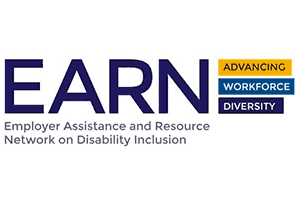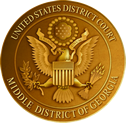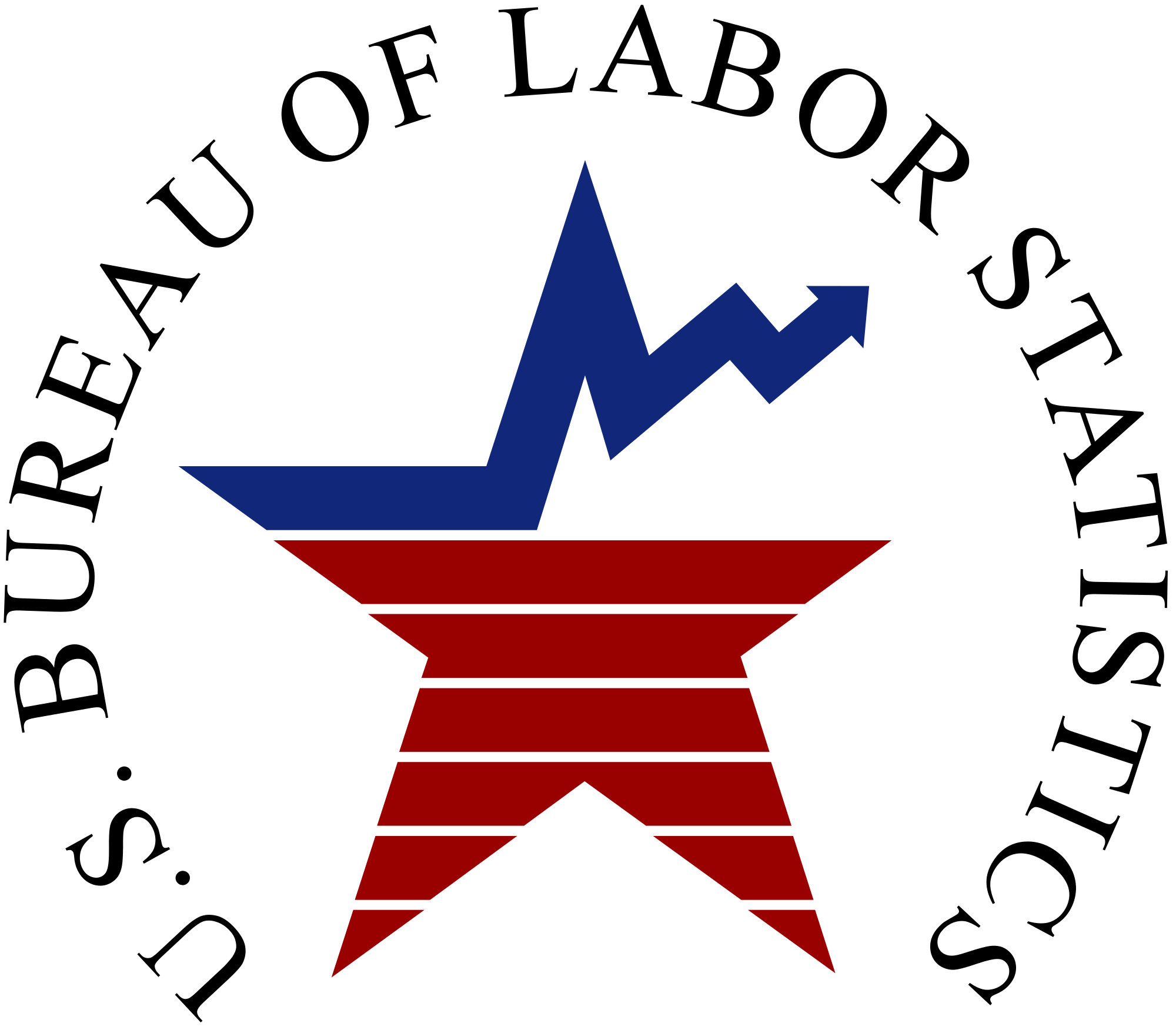
- Survey Says…Participants Prefer Online Mediation For EEOC Charge Resolution
- EARN Released Short Video To Assist Employers in Mental Health Awareness
- Federal Court Finds Georgia County Employee Medical Insurance Program Violated Title VII On Its Face By Denying A Transgender Female Employee “Sex Change” Surgery Coverage
- NLRB Revised Electronic Notice Posting Requirement
- May’s Employment Situation Relatively Status Quo from April
Wednesday, June 1, 2022: Survey Says…Participants Prefer Online Mediation For EEOC Charge Resolution

E. Patrick McDermott, professor of legal studies and management and department chair at the Franklin P. Perdue School of Business at Salisbury University, and his colleague Ruth I. Obar analyzed 1,234 online participant surveys and 139 mediator surveys to complete the studies. Of the participant surveys, 782 were from employers and employer representatives, and 452 were from charging parties and charging party representatives. The researchers compared the results with a 2000 external evaluation of EEOC’s mediation program and EEOC-administered survey responses from June 2018 and July 2019.
“In 2000, we reported that the EEOC had ‘hit a home run’ in its in-person mediation program. Twenty years later, without a playbook on the transition from in-person mediation to online dispute resolution (ODR), there is a similar result with even greater import,” said McDermott. “This ODR program data suggests to the dispute resolution community and to the U.S. legal system that new and flexible online mediation procedures are seen by all the parties and representatives as efficient, flexible, cost-saving, attractive, and preferable to traditional in-person mediation.”
The participant study also found that online mediation significantly increases access to justice for charging parties. About one in five charging parties do not want to be in the same physical location as their employer, and the virtual format provides “a safe space” for those participants. It also provides employers with more flexibility, making them more likely to participate in mediation. Nearly two-thirds (62%) of employers reported that the availability of online mediation made it more attractive for them to participate in the EEOC’s mediation program.
Studies on EEOC Mediation Program
1. An Evaluation of the Equal Employment Opportunity Commission Mediation Program examined the program from the perspective of charging parties and respondents and their satisfaction with the EEOC mediation process. The survey of parties who participated in the program found the process to be fair and neutral, and 96% of respondents and 91% of charging parties indicated they would use the mediation process again if the opportunity arose, even where the results of the mediation were different than they had anticipated.
2. The EEOC Mediation Program: Mediators’ Perspective on the Parties, Processes, and Outcomes. This report presents mediator feedback on the dynamics of the mediation process, including conduct that facilitates the resolution of the dispute:
- why the dispute was not resolved,
- mediator tactics,
- behavior that acts as a barrier to a resolution,
- the role of legal counsel and other representatives, and
- the turning point(s) in a successful mediation.
The report also focuses on mediator suggestions regarding process improvements and the perception that charging parties may benefit from legal representation. EEOC has provided mediator training on “leveling the playing field” and continues to explore partnerships with qualified outside entities, such as the American Bar Association and local bar associations, to provide pro bono representation to charging parties and employers.
3. An Investigation of the Reasons for the Lack of Employer Participation in the EEOC Mediation Program. The survey found that most employers are well informed about the EEOC mediation program but chose not to use it because they have conducted an internal investigation and believe the specific charge to be without merit or have concluded that EEOC will not issue a reasonable cause finding. The report concludes that the perceived quality of the charges and not the perceived quality of the mediation program determines whether the employer will mediate the charge.
4. EEOC Mediation Participants Experience in Online Mediation and Comparison to In-Person Mediation. This study found that 98% of employers and 92% of charging parties would participate in the EEOC’s mediation program again. Most participants (nearly 70%) reported that they would prefer online mediation to in-person mediation in the future. Participants cited flexibility, convenience, cost savings, and a “safe space” as reasons for choosing online mediation.
5. EEOC Mediators’ Perception of Remote Mediation and Comparisons to In-Person Mediation. This study shows that EEOC mediators found that online mediation is:
- easier to use and more flexible than in-person mediation;
- achieved similar or better quality and value of settlements for both parties; and
- increased access to justice for charging parties.
Wednesday, June 1, 2022: EARN Released Short Video To Assist Employers in Mental Health Awareness

The training manual is a companion resource to EARN’s Mental Health Toolkit. The 9-minute online course teaches employers strategies to support employee mental health. It takes a deep dive into the 4As outlined in EARN’s Mental Health Toolkit:
- Build awareness and a supportive culture.
- Provide accommodations to employees with mental health conditions.
- Offer employee assistance.
- Ensure access to mental health treatment along with links to valuable online resources.
The module also features a series of quiz questions to help users assess how well they retained the information presented.
“Mental health conditions impact one in five American adults each year,” the module explains. “EARN’s Mental Health Toolkit and training are a gateway to background, tools, and resources that can help employers learn how to support workplace mental health and wellbeing and cultivate a welcoming and supportive work environment for all employees, including those with mental health conditions.”
Thursday, June 2, 2022: Federal Court Finds Georgia County Employee Medical Insurance Program Violated Title VII On Its Face By Denying A Transgender Female Employee “Sex Change” Surgery Coverage

The following passage from page 22 of Judge Treadwell’s Slip Opinion regurgitates and adopts the Deputy’s Statement of Material Fact in the case. That adoption reveals the Judge’s rationale for subsequently concluding that the at-issue medical coverage exclusion–aimed only at Transgender employees–violated Title VII:
“The Exclusion denies coverage for procedures and treatments that would otherwise be covered if provided in connection with a different diagnosis. [record citation omitted] (agreeing that “without an exclusion, gender confirmation surgery would be covered under a health plan administered by Anthem if it was medically necessary”); [record citation omitted] (Q: “Would exclusion 57 exclude a mastectomy sought for cancer treatment?” A: “No.” Q: “But would exclusion 57 prevent coverage of a mastectomy if it was used to treat gender dysphoria?” A: “Yes.”); [record citation omitted] (Q: “Exclusion 26 would not exclude hormone replacement therapy to treat menopause?” A: “No, not as I understand it.” Q: “But would exclusion 26 prevent hormone replacement therapy if used to treat gender dysphoria?” A: “As I understand it, yes.”); [record citation omitted] (Q: “Is mental healthcare generally covered under the plan?” A: “Yes.” Q: “So it becomes not covered when it’s related to transgender treatment?” A: “Well, yes [.] When it is because of transgender surgery or whatever it may be, then it is not covered.”); [record citation omitted] (Q: “So were you saying that if [mental health] counseling were done for the purpose of treating gender dysphoria, then it would not be covered because of the exclusion?” A: “Yes.”); [record citation omitted] (Q: “Would any mental health counseling around transitioning be excluded under this exclusion?” A: “I believe it would, if it was specific to transitioning, yes.”); [record citation omitted].”
The court also ruled that the Deputy’s Equal Protection claim could proceed to trial. The Equal Protection Clause of the Fourteenth Amendment guarantees that “[n]o State shall … deny to any person within its jurisdiction the equal protection of the laws. U.S. Const. Amend. XIV, § 1.” However, the Court also ruled that the Deputy’s ADA claim failed because she had not introduced evidence sufficient to prove that the gender dysphoria from which she suffered was the result of a physical impairment.
“Houston: We Have A Problem.” If this case is correctly decided, and we believe it is following the SCOTUS’ 2020 Bostock v. Clayton County, Georgia case decision, employers and insurance carriers need to carefully review the exclusions from coverage in their medical plans. We believe the medical coverage exclusion struck down in this case as violative on its face with Title VII, is not an uncommon exclusion. If so, those plans will legally survive only if a successful appeal of this case decision and others like it, are reversed on appeal (although we do not see that to be likely).
Practice Tip: Post-Bostock, companies will need to proffer a reason for an exclusion for “sex change,” or “sex reassignment,” or “gender affirming,” surgery by whatever name, OTHER THAN because of the transgender employee’s transitioning status. Dig your medical policies out. See what they say. Look in the index for “exclusions.”
Thursday, June 2, 2022: NLRB Revised Electronic Notice Posting Requirement

Prior Standard
Under prior law, both physical and any electronic notice posting were deferred in either circumstance to within 14 days of the facility’s reopening and staffing by a substantial complement of employees, as NLRB had prescribed in Danbury Ambulance Service, 369 NLRB No. 68 (2020).
New Standard
A Board majority in Paragon (see below) held that an employer had to accomplish any required electronic notice posting must within 14 days after service by the Region while retaining the Danbury schedule as to physical posting of the notice.
Why?
“We recognize that the Respondent’s facilities may be closed due to the Coronavirus Disease 2019 (COVID-19) pandemic or that the facilities may be open but a substantial complement of employees may not be physically present on site. Nevertheless, the Respondent may be communicating with its employees by electronic means. In such circumstances, we find that prompt posting of the notice by electronic means will best effectuate the purposes of the Act by providing employees with timely notice of the unfair labor practices and the steps the Respondent will take to remedy them.” (pg. 3)
| The Board | Party | New Standard | Term Expires |
| John F. Ring | Republican | No | 12/16/2022 |
| Gwynne Wilcox | Democrat | Yes | 08/27/2023 |
| Lauren M. McFerran, Chairman | Democrat | Yes | 12/16/2024 |
| Marvin E. Kaplan | Republican | No | 08/27/2025 |
| David Prouty | Democrat | Yes | 07/28/2026 |
Friday, June 3, 2022: May’s Employment Situation Relatively Status Quo from April

According to the Bureau of Labor Statistics (BLS) May 2022 Employment Situation Report, nonfarm payroll employment rose by 390,000 in May, and the short-term unemployment rate (those unemployed for under 27 weeks) remained at 3.6%. The number of long-term unemployed (those jobless for 27 or more weeks) edged down to 1.4 million. Nonetheless, the long-term measure is still 235,000 higher than in February 2020. The long-term unemployed accounted for 23.2% of all unemployed persons in the U.S. in May.
The number of persons not in the labor force who currently want a job was little changed at 5.7 million in May. This measure remains above its February 2020 level of 5.0 million. BLS does not count these individuals as unemployed because they were not actively looking for work during the four weeks preceding the survey or were unavailable to take a job.
Job Gains
Veterans, Individuals with Disabilities, and Asians noticeably reduced their unemployment percentages month-over-month (see table below) while the unemployment percentages for African Americans and Hispanics increased. (Notable job gains occurred again in leisure and hospitality (as Americans again returned to the air to travel and start summer vacations and continued to eat more meals out of the house), professional and business services, and transportation and warehousing.
- Leisure & Hospitality (L&H) +84,000 May / +78,000 April
- Perspective: Employment in L&H is down by 1.3 million (7.9%) compared with February 2020
- Professional & Business services (P&B) (+75,000 May / +49,000)
- Perspective: Employment in P&B is 821,000 higher than in February 2020.
- Transportation and Warehousing (T&W) +47,000 May / +52,000 April
- Perspective: Employment in T&W is 709,000 higher than in February 2020.
Job Losses
In May, employment in retail trade declined by 61,000; however, employment in that sector is nonetheless still 159,000 above its February 2020 level.
|
The Employment Situation – May 2022 |
||||
| Unemployment Rate | May 2022 | April 2022 | May 2021 | Feb 2020 Pre-Pandemic |
| National (Seasonally adjusted) |
3.6% | 3.6% | 5.8% | 3.5% |
|
Women (20+) |
3.2% 6.2% 2.4% 4.3% 3.4% 3.4% |
3.2% 5.9% 3.1% 4.1% 3.5% 3.2% |
5.1% 9.1% 5.5% 7.1% 5.8% 5.3% |
3.0% 6.0% 2.5% 4.4% 3.2% 3.1% |
| Veteran (Not seasonally adjusted) |
2.7% | 2.9% | 4.1% | 3.7% |
| Individuals with Disabilities (Not seasonally adjusted) |
7.1% | 8.3% | 10.2% | 7.8% |
See Also
THIS COLUMN IS MEANT TO ASSIST IN A GENERAL UNDERSTANDING OF THE CURRENT LAW AND PRACTICE RELATING TO OFCCP. IT IS NOT TO BE REGARDED AS LEGAL ADVICE. COMPANIES OR INDIVIDUALS WITH PARTICULAR QUESTIONS SHOULD SEEK ADVICE OF COUNSEL.
SUBSCRIBE.
Compliance Alerts
Compliance Tips
Week In Review (WIR)
Subscribe to receive alerts, news and updates on all things related to OFCCP compliance as it applies to federal contractors.
OFCCP Compliance Text Alerts
Get OFCCP compliance alerts on your cell phone. Text the word compliance to 55678 and confirm your subscription. Provider message and data rates may apply.


